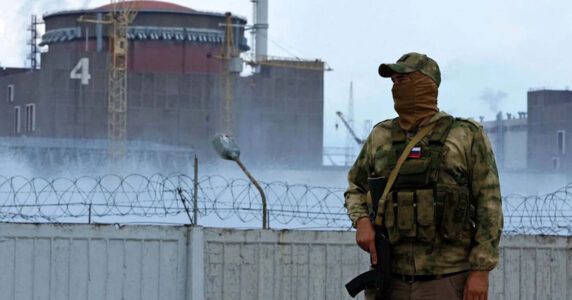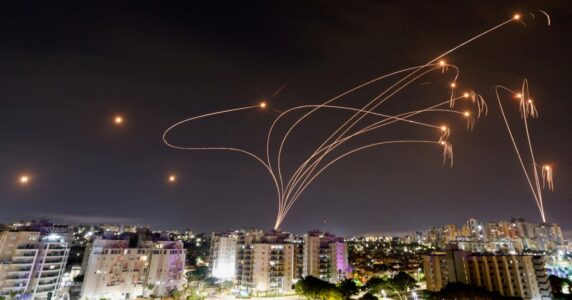Navigation and useful materials
Russian propaganda continues to dehumanize Ukrainians with the help of outright fakes.
Another “proof” of our apparent bloodthirstiness was the image of a chocolate bar with a remarkable name “Death of Alyoshka.” A portrait of a boy in a helmet with a mourning ribbon is placed on the wrapper of the confectionery. Propagandists claim that Ukrainians wish Russian children dead.
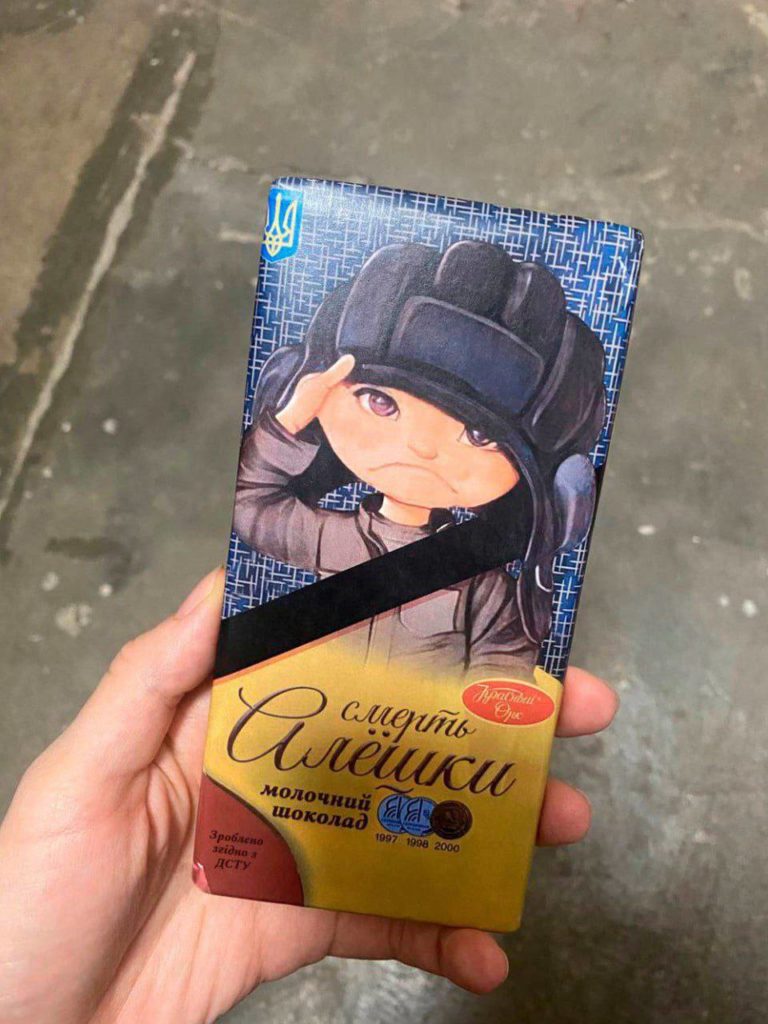
Centre for Strategic Communication and Information Security explains the idea of the fake created for Russian and foreign audiences.
Creation and dissemination of the fake
The only “evidence” of the existence of this necromantic chocolate bar is a photo first posted on the propagandist Twitter account Donbass Devushka on January 30. The account is a channel for spreading anti-Ukrainian and anti-American propaganda in English, a large part of the publications are memes, collages, and other graphic content.
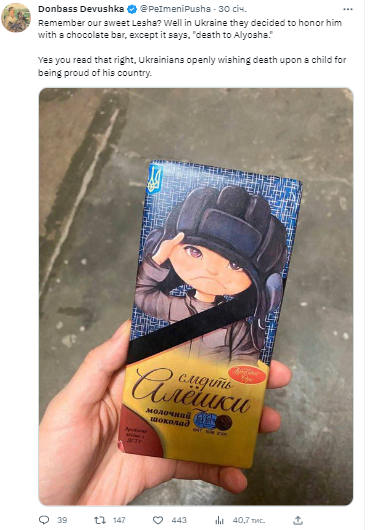
The authors of the publication claim that the photo shows a bar of chocolate produced in Ukraine. The key message of the fake is stated in the description: Ukrainians, apparently, wish death to a child for being proud of their country. Almost 150 retweets were made in one day, while most posts rarely exceed 20.
In the Ukrainian segment of social networks, there are few mentions of “Death of Alyoshka.” The publications appeared after the Russian ones, the chocolate is mentioned in them as another example of the weakness of the Russian factory of fakes. And this is not surprising: because unlike the Russian audience, the image of the boy “Alyosha” is not widely known to the Ukrainian audience.
Russian Telegram channels and propaganda media, on the other hand, actively push the subject. During January 30-31, news about “Alyosha” appeared on the channels of Anatolii Shariy, Roman Golovanov, Ruslan Ostashko, Oplot TV and dozens of Russian-language channels of the VKontakte social network.
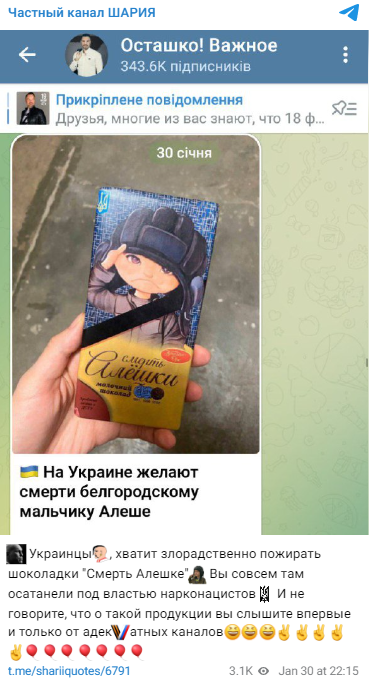
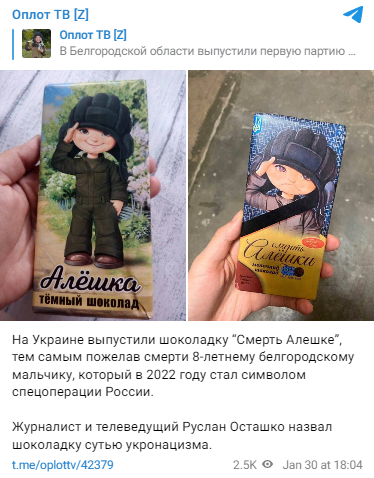
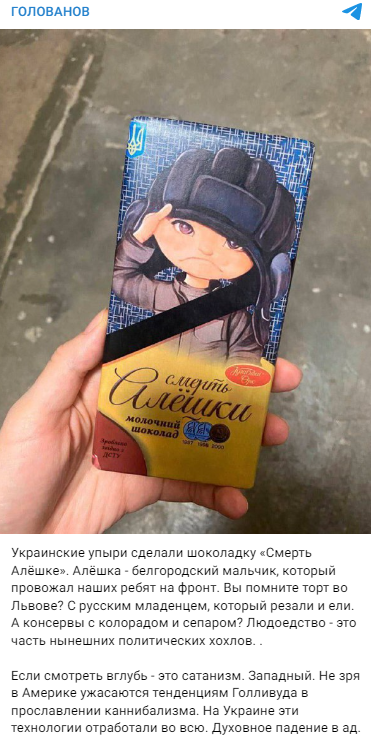
To engage the foreign audience, propaganda used Twitter and VK accounts specializing in Russian propagandist messages. Translations and retelling of the original post were published in Spanish, Italian, French and Greek, in addition to English.
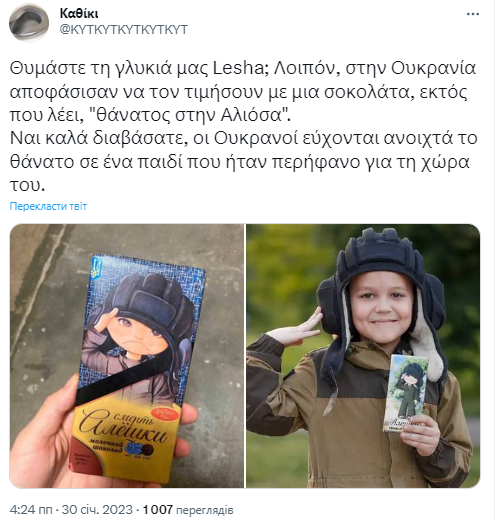

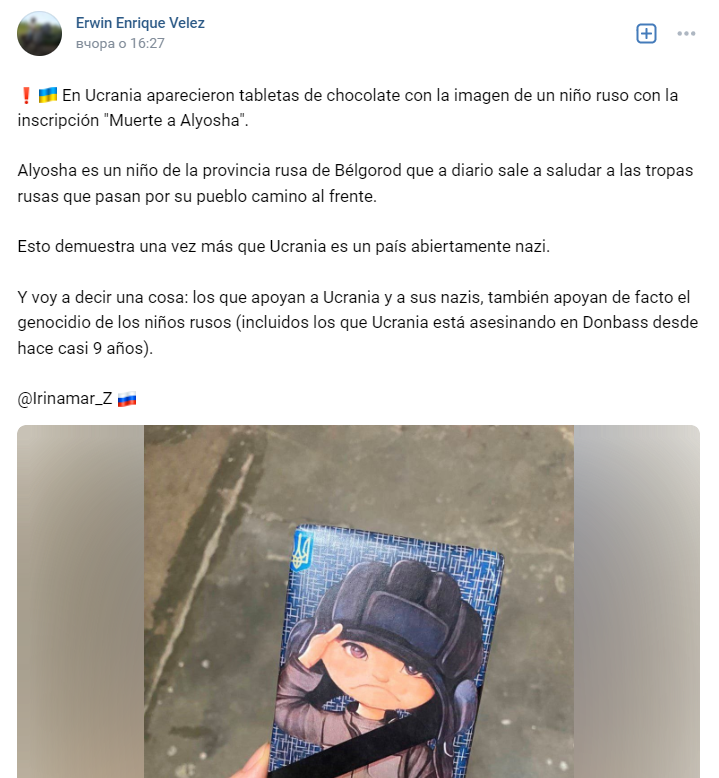
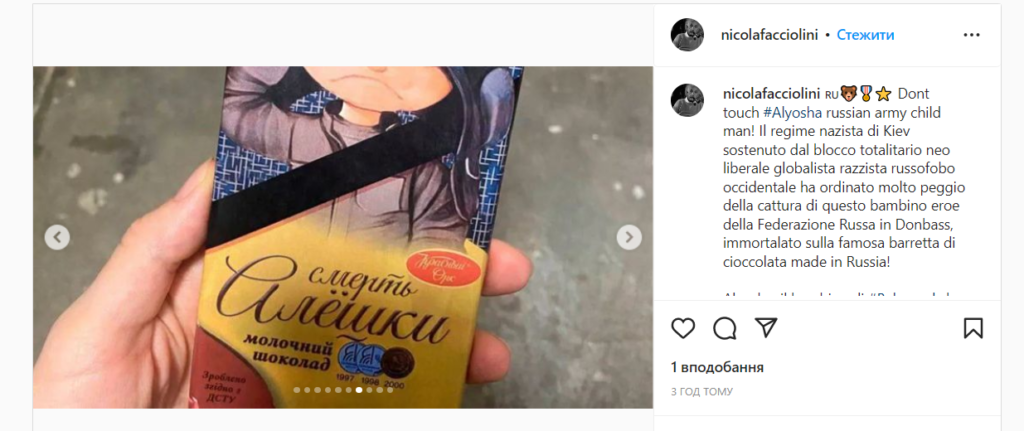
Where “Alyoshka” comes from
The boy appeared in the Russian media space in the spring of 2022. At that time, an allegedly “viral” video about a young resident of the Belgorod region of Russia, who was running along the motorway in a helmet and hailing an armoured vehicle that was driving towards the border with Ukraine, was shared in Telegram channels and social networks.

Just like the “grandmother with the red flag”, eight-year-old Alexey Pavlichenko became one of the symbols of the propaganda in the war of aggression against Ukraine — archetypal images of defenceless “old people and children” who must be “rescued from Ukrainian Nazis.”
READ ALSO: Grandma with a red flag: how Russian propaganda failed yet again
But while the story of Anna Ivanova, a resident of the Kharkiv region, was an outright failure — primarily due to the explanation provided by the Centre for Strategic Communication, the promotion of “Alyosha” can be considered a successful case in general. Federal and regional TV channels filmed stories about him, he became the hero of publications in the most popular Russian news media, and he was noticed by military correspondents.
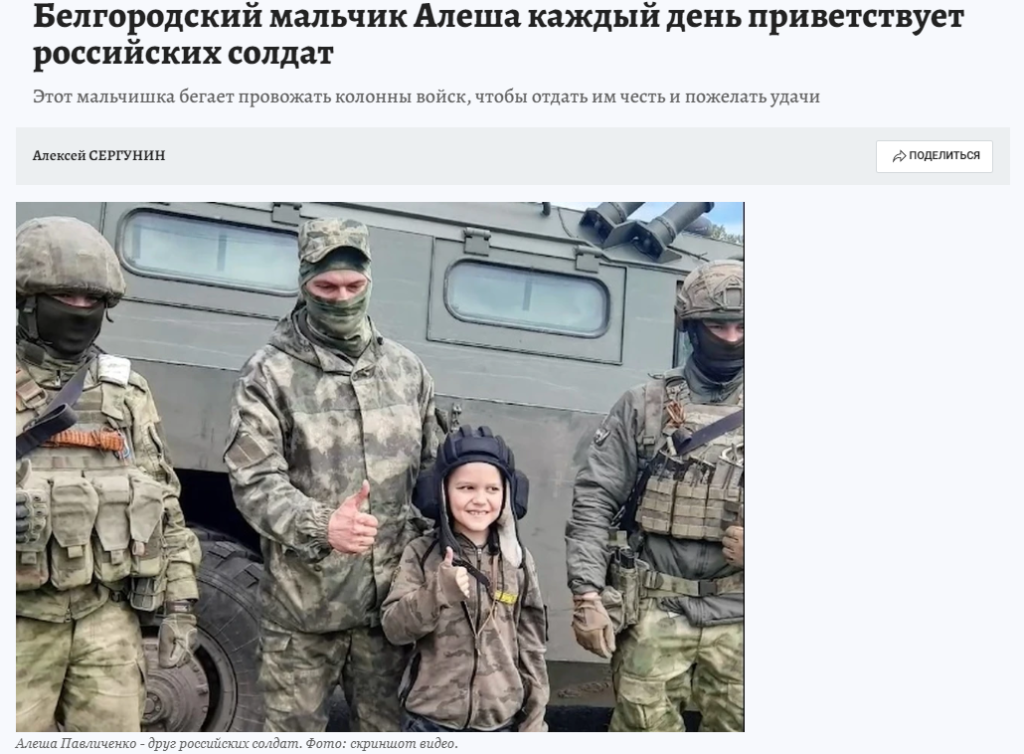
The campaign was conducted professionally, with the use of popular PR technologies and regular generation of information drives, among which were:
- the boy’s meetings with the Russian military and photo shoots in military uniform;
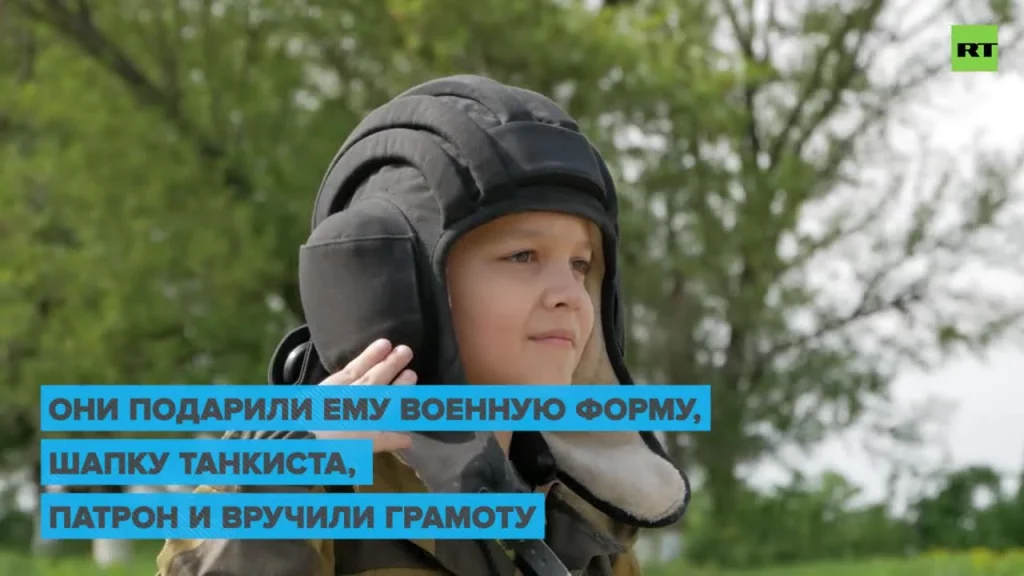
- gratitude from the Russian MoD;

- tour to the school with the cadet class and changing into a police uniform;

- honorary inclusion of Alexey Pavlichenko in the ranks of the Youth Army;
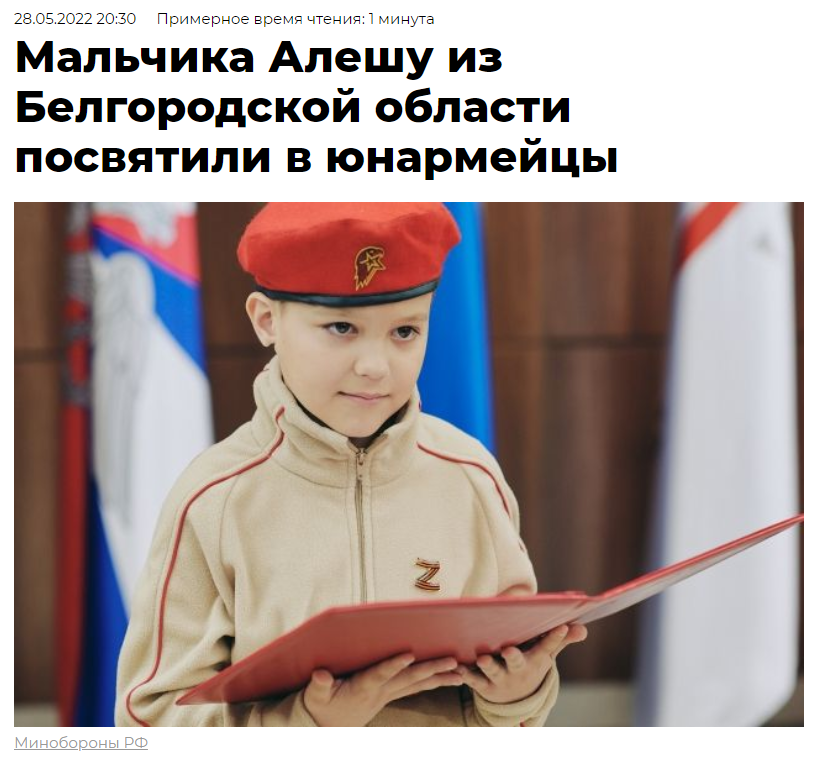
- the appearance of wall paintings with “Alyosha” in various parts of the Russian Federation;
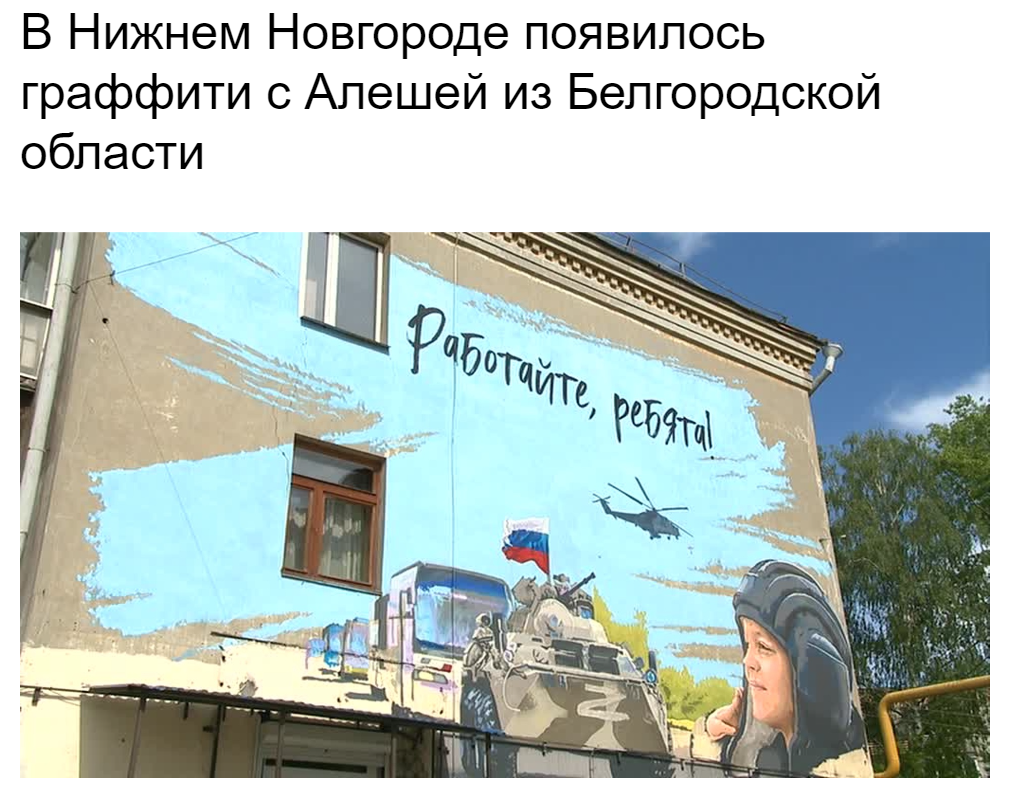
- participation and victory in the all-Russian competition “Hero Children,” a trip to Moscow to receive an award from the Federation Council.
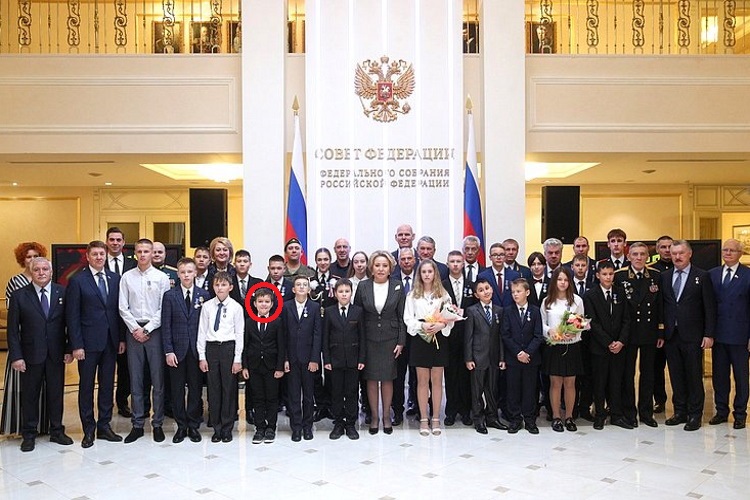
The highlight of the campaign was the limited issue of the “Alyoshka” chocolate (homage to the chocolate “Alyonka” with the image of a girl, popular since the Soviet times).
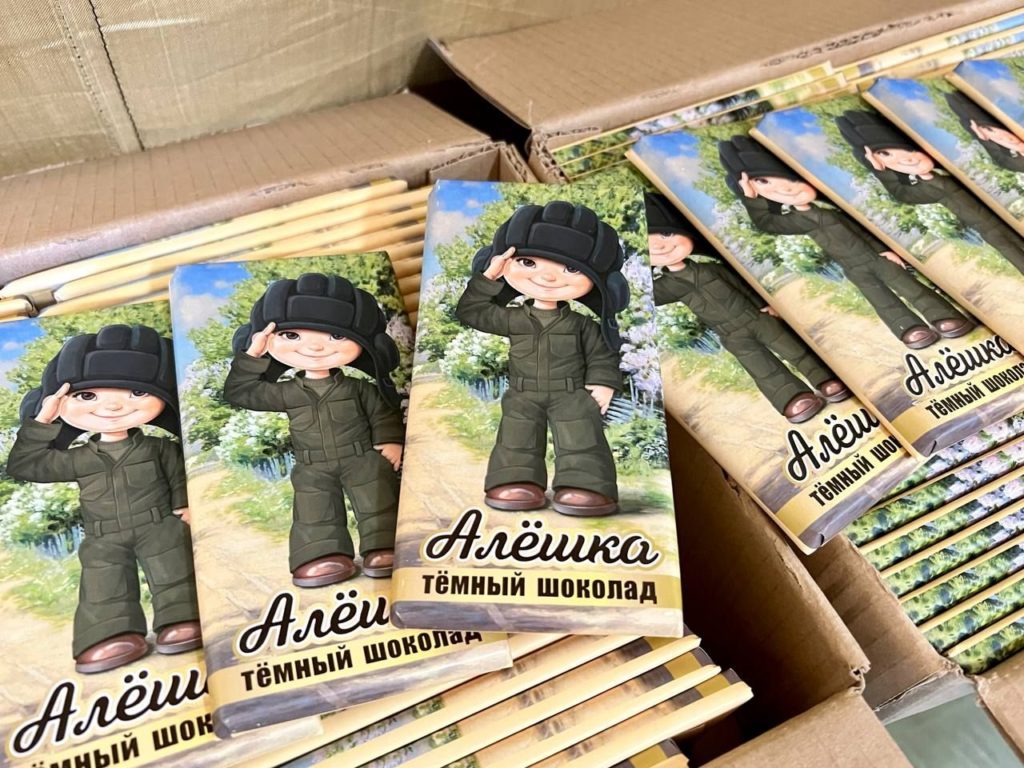
However, during the promotional photo shoot, a patch with either a Serbian flag or an inverted Russian flag appeared on the boy’s arm.

The governor of the Belgorod region, Vyacheslav Gladkov, personally presented a few bars to Putin in August.

Therefore, there are reasons to consider the fresh “chocolate” fake part of this campaign. Russian propaganda spent months infatuating the audience with the boy Alyosha, only to then use his image as an emotional trigger to generate another wave of anger among gullible content consumers.
The “Alyoshka” case is a logical continuation of the Kremlin’s criminal policy of militarizing childhood. Which, in turn, is a component of the quasi-religious cult of war. Involvement of children in it is carried out through participation in paramilitary organizations (such as Youth Army) and annual carnivalized celebrations of Victory Day.
READ ALSO: Sacred Victims and Youth Army: How Russian Fascism Uses Children
As of the end of December 2022, the Prosecutor General’s Office of Ukraine recorded deaths of 450 Ukrainian children and injury to 867 as a result of the Russian invasion.

11-month-old Mikita Zelenskyi, 15-year-old Maria Lebid, and 17-year-old Maksym Bohutskyi were killed by a Russian anti-ship missile X-22 that hit a high-rise building in Dnipro on January 14. The children who died in Mariupol and other Ukrainian towns and villages destroyed and occupied by the Russians will still have to be counted and mourned.
READ ALSO: Killed in their own homes. Putin’s war on residential areas.
While the Russian army kills real Ukrainian children, Russian propaganda cynically accuses Ukrainians of wanting to kill little Russians. This is needed to maintain the war machine and its high level of support among the Russian population. This is another proof that the Russian “fighters of the information front” are war criminals. Just like the Russian military and the political leadership of the Russian Federation.
Centre for Strategic Communication and Information Security
If you have found a spelling error, please, notify us by selecting that text and pressing Ctrl+Enter.
